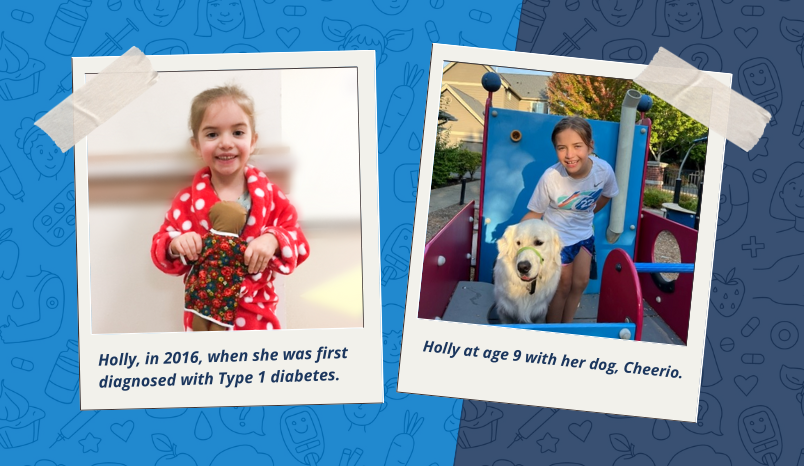Type 1 Diabetes: Holly’s Story
Overlake Diabetes Educator Noraileen Kato, RN, BSN, spoke with colleague Sarah MacDougall RN, BSN, to learn more about the effects of Type 1 diabetes, also known as juvenile diabetes, on children. Sarah has a close connection with this particular issue. Just before her daughter Holly turned 4, Sarah brought her to their pediatrician, thinking she was suffering from a cold. The pediatrician gave Holly a blood sugar test after noticing that she appeared thirsty, pale and tired. They soon discovered it was more than just a cold that was ailing Holly. To Sarah's surprise, her daughter had Type 1 diabetes—a chronic condition in which the pancreas produces little or no insulin.

Noraileen: How has Holly coped with her diagnosis?
Sarah: We have a very supportive family. That made such a difference in caring for and managing Holly’s diabetes. Her brother Lane has been amazing in helping her watch her blood sugar and even learning how to use her insulin pump to assist her. He is only upset that she has an iPhone—to use her glucose monitoring system’s mobile app—and he doesn’t.
Noraileen: What are Holly’s favorite foods?
Sarah: Holly has no diet restrictions but may have to delay eating depending on her blood sugar. We believe in eating a healthy, balanced diet. Sometimes, if she doesn’t get all her carbohydrates at mealtime, we have to give her something extra to get her blood sugar up. She likes juice, applesauce and, of course, candy on occasion. Her favorite foods are sloppy joes and mac and cheese.
Noraileen: What devices does Holly use to manage her Type 1 diabetes?
Sarah: Holly has a wearable pod that uses an automated insulin delivery system to serve as an “artificial pancreas.” The pod connects with her glucose monitoring system and delivers basal insulin every five minutes—as needed—as it monitors her blood sugar. It also utilizes technology to predict her blood sugar levels 60 minutes into the future. The wearable pod has been an amazing device for helping us manage her diabetes. We still give her a rapid-acting dose (bolus) of insulin with food and when her blood sugar starts rising but overall, it is less management and worry. We change out her pod every three days and the sensor tied to her glucose monitoring system every ten days. She does great with changes and has even done the changes herself while at camp.
Noraileen: What would you tell someone who has a family member who has been diagnosed with diabetes?
Sarah: It has definitely been one of my biggest challenges and I never take my eyes off her blood sugar levels. We always have talked about diabetes in a positive way and have never been embarrassed of treating it out in the open. She has also attended a summer camp designed for children with Type 1 diabetes and this has been very positive. She now has a few friends that are of a similar age and also have Type 1 diabetes. They meet up and are such wonderful support. It is so nice to have other families to talk to with loved ones diagnosed with Type 1 diabetes. That added support is crucial.
“I’m so proud of my daughter Holly and our family during our Type 1 diabetes journey. We are continuing to learn and grow together. Holly says, ‘Don’t let diabetes stop you from doing the things you love!’” – Sarah MacDougall RN, BSN
Overlake offers one-on-one education as well as two-part classes to help people learn practical skills to manage diabetes, including medication, meal planning, glucose monitoring and more. Classes are taught by certified diabetes educators. Please see your healthcare provider for a referral. Learn more about diabetes education at Overlake or call 425.688.5111.
November is National Diabetes Awareness Month. If you have symptoms of diabetes which include frequent urination, excessive thirst and fatigue, speak with your healthcare provider about your concerns.








